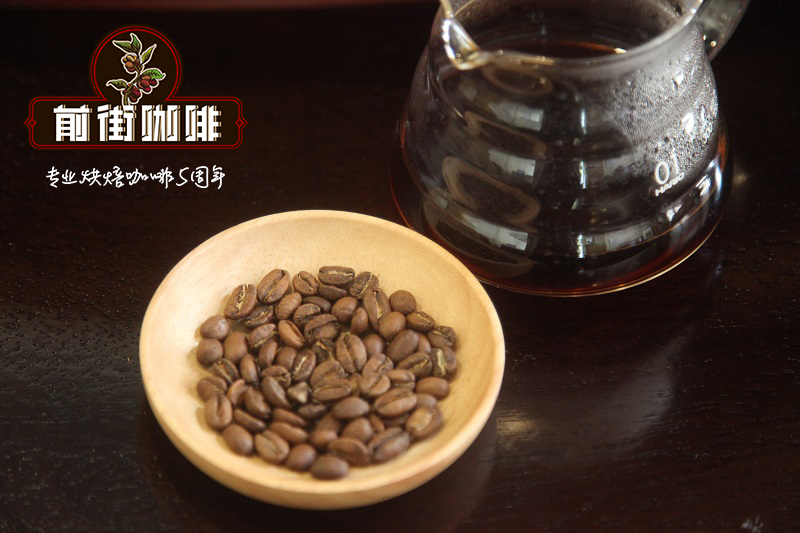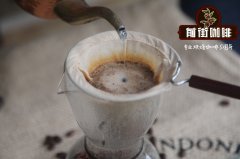Guji Shaquiso Dembi House washing / Solar G1 Ethiopian Fine Coffee introduction

Professional coffee knowledge exchange More coffee bean information Please pay attention to coffee workshop (Weixin Official Accounts cafe_style)
Production area: Sidamo/Guji/Xiqisuo/Dunbiuduo
Treatment site: Jigesha treatment plant
Altitude 1900~2100M
Breed: Ethiopian native species
Treatment: Wash/Sun
Grade: G1
Flavor description (washed): Sweet peach, floral notes and citrus aromas, Yangleduo sweet and sour with green tea taste, medium temperature taste more soft and smooth mouth, sweet and delicate tail…
Flavor description (sun exposure): Grape, orange berries, chocolate bread, sandalwood aromas, acid freshness, sweet and sour juicy taste…
Ethiopia valley, kisha, kisha. jpg
Guji Zone has always been a production area worthy of attention. The development in recent years has also confirmed that the rise of Guji production area is indeed one of the important trends in Ethiopia's development in recent years. In addition to beans from larger producing areas such as Hambera and Chaso, there are also excellent beans from processing plants or even single estates that cannot be matched by traditional Yegashvili producing areas. What's more, in terms of innovative treatment methods, there will also be honey treatment batches. In addition to Gesha Village, which is the latest focus, Guji has also become an important hot spot. To understand trends in Ethiopia, Guji can be said to be the focus that cannot be ignored.
Ethiopia's administrative divisions are divided into four levels, arranged in the order of Region, Zone, woreda and kebele from large to small. Most of the coffee beans are named according to this rule. Guji-Shaqisuo is located in the southeast of the famous producing area Yejiashefei. In the administrative division, it belongs to Oromia Region→Guji Zone→Shakisso woreda. It belongs to regional coffee beans. Gigesa is located in Danbi Uddo Kebele village in Shakisso and was privately established by Faysel Abdosh in 2014. Faysel Abdosh not only owns its own processing plant, but also has a coffee export company, which can be said to be close to the first line of Ethiopian fine coffee trend. This processing plant is also the result of Faysel Abdosh's experience and knowledge as a fine coffee export place into the painstaking efforts of producers, which seems to verify the ultimate pursuit of fine coffee industry. The operating standards and coffee quality of this processing plant are at the first line level, so it has just been established. Nordic Approach favors.
In recent years, Ethiopia's most eye-catching production area is Yejia Shefei. Guji Shaqisuo is less known than Yejia Shefei. However, under the trend of soaring overall prices of Yejia Shefei in 2015, international boutique buyers have turned to other nearby production areas, such as Sidamo, Limu, Jimma, etc. Many potential production areas and producers have been discovered one after another, such as Limu Gera and Sunlight. Gugi Shakiso's coffee is actually quite unique, producing coffee that has repeatedly gained market attention. Ninety Plus launched the legendary Nekisse at the end of 2009, which means "nectar from Shakiso".(Nectar from Shakisso), the origin and name are from Shakisso; another Level Up launched the same flower language for Shakisso (Derar Ela), last year also repeatedly won the industry's praise, and won the 2014 April Coffee Review 95 points excellent results.
Just as Yejia Shefei became famous after its fame, Guji was also established as an independent production area by ECX in 2010 due to its superior geographical location and medium taste. Shakisso (sometimes translated as Shakiso) is the most attractive micro-production area in Guji, geographically located in the southeast of Yejia Shefei, with an average altitude of more than 1,800 meters, fertile black soil (Vertisol), significant temperature difference between day and night, so that the local has all the conditions to produce high-quality fine coffee. Almost all the local coffee production sources belong to individual smallholder forms. When the season comes, the ripe red berries adjacent to their own are picked and sent to the treatment plant. They are placed on well-ventilated African shelves to control the temperature and fermentation degree. After removing the pulp, the water content is reduced to 11.5%-12%. When the post-treatment and standing operations are completed, they are exported through the bidding system of ECX Ethiopian Commodity Exchange. Local exporters or international buyers then compete to find the right green coffee beans.
Important Notice :
前街咖啡 FrontStreet Coffee has moved to new addredd:
FrontStreet Coffee Address: 315,Donghua East Road,GuangZhou
Tel:020 38364473
- Prev

What are the characteristics of elephant bean varieties in Guatemala-Platanillo Manor? What kind of flavor do you have?
Professional coffee knowledge exchange more coffee bean information please follow the coffee workshop (Wechat official account cafe_style) Guatemala-Platanillo manor Marago Gippe elephant bean variety characteristics? What kind of flavor do you have? Coffee has contributed to Guatemala's economic situation in the past century. It is estimated that there are about 120000 coffee producers there, making it the main coffee producer in Guatemala.
- Next

Introduction of Yega Xuefei Hofsa washing G1 Ethiopian Fine Coffee
Professional coffee knowledge exchange more coffee bean information please follow Coffee Workshop (Wechat official account cafe_style) production area: Yega Xuefei / Hofsa Village producer: Lakeside altitude: 1900 to 2000m varieties: native processing method: washing grade: G1. Tasting notes: sweet flowers, apricot, molasses, caramel, tea, roasted cocoa aroma, bright acidity, lush taste
Related
- Detailed explanation of Jadeite planting Land in Panamanian Jadeite Manor introduction to the grading system of Jadeite competitive bidding, Red bid, Green bid and Rose Summer
- Story of Coffee planting in Brenka region of Costa Rica Stonehenge Manor anaerobic heavy honey treatment of flavor mouth
- What's on the barrel of Blue Mountain Coffee beans?
- Can American coffee also pull flowers? How to use hot American style to pull out a good-looking pattern?
- Can you make a cold extract with coffee beans? What is the right proportion for cold-extracted coffee formula?
- Indonesian PWN Gold Mandrine Coffee Origin Features Flavor How to Chong? Mandolin coffee is American.
- A brief introduction to the flavor characteristics of Brazilian yellow bourbon coffee beans
- What is the effect of different water quality on the flavor of cold-extracted coffee? What kind of water is best for brewing coffee?
- Why do you think of Rose Summer whenever you mention Panamanian coffee?
- Introduction to the characteristics of authentic blue mountain coffee bean producing areas? What is the CIB Coffee Authority in Jamaica?

